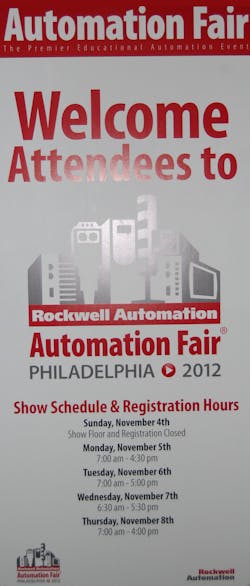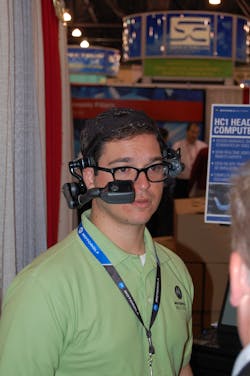Big Data and the Future of Manufacturing Technology (a la the Rockwell Automation Fair)
I am fresh back at the IW office in Cleveland today after a busy week on the road for the Rockwell Automation Fair.
From forums on safety automation, the energy and environmental industries, and global machine and equipment builders, to seemingly endless resources on ways to improve workforce enablement and energy management, the three-day fair and related events were jammed full of manufacturing technologies and industrial automation information.
As I try to make sense of my notes from the event in the relative calm of my cube, one major theme sticks out that really seems to tie together much of the information discussed at the event: big data.
To Rockwell, the terms "big data" and "big data analytics" are taboo and subject to much eye-rolling and redirection. Sujeet Chand, Rockwell's CTO, for example, deferred to something he called "asset management solutions," refusing even to utter the catchier buzz-wordy synonym.
That little semantic pet peeve -- however trifling it may seem -- captures the essence of the big data problem and the issue driving every technology and solution presented at the Automation Fair.
Behind the drive to optimized production and energy management, behind manufacturing intelligence and mobile solutions, there is an absolute and unwavering focus on taking all of those petabytes of data we are collecting in the manufacturing process -- measures of every degree of every gear in a motor, of every vibration of every turn of a rotor, of every stylistic tick each employee adds to every process -- and translating it into useful, actionable intelligence.
Calling big data analysis "asset management solutions" does exactly that -- it translates a vague, broad term into something manufacturers can process and actually use to help them understand their business better.
So under any name, that trick of creating intelligence from data seems to be positioned at the heart of industrial IT developments, particularly in the automation field. Heading into 2013, it is a safe bet that this focus will define the future of manufacturing technology well into the new year.
Big Data Toys
Motorola demonstrates the HC1 on the floor of the Rockwell Automation Fair.
My favorite new gadget working to this end at the show was the Motorola Solutions HC1 headset computer.
Due out in Q2 2013, this voice-commanded, video-enabled, totally hands-free computer is straight out of a Neal Stephenson novel and is the clearest view of the future I've seen.
There was a long line all week to play with the new device, which was in large part fueled simply by its overwhelming futuristic wow-factor -- the same that put me in line to try it on. But beyond that, every feature of the device comes down to one thing: data.
As cool as the tool is (in the geekiest sense possible), the device follows the standard dictum of manufacturing technology (the right information to the right person at the right time) just like any other device.
However, this is the first device I've seen that really takes today's big data manufacturing environment into account. The right information today takes the form of machines we have to see and operate, schematics and instructions and dashboard readouts we have to reference, and consultations with experts from the other side of the world. When these converge, typing data into the system on a tablet can be as hopeless and inadequate as would be doing so on a desktop back in the office.
This, I think, is the future -- both in the plant and out -- as big data (or whatever you call it) takes over. It will be a silly looking future, sure, but it will have a lot of cool toys tools. And anyway, at this point there may not be any other choice.






